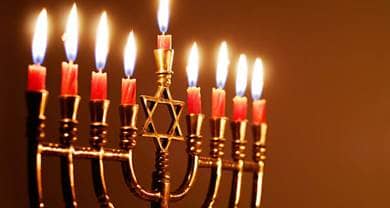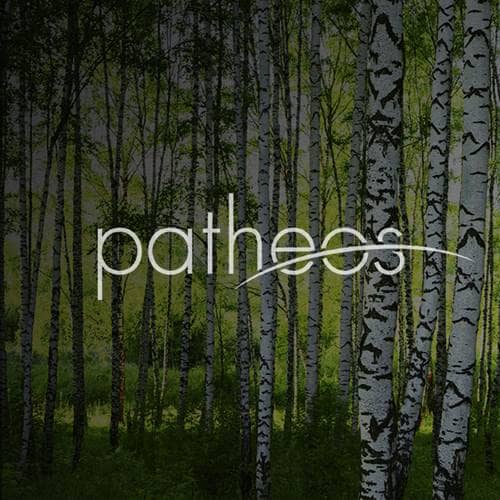- Trending:
- Pope Leo Xiv
- |
- Israel
- |
- Trump
- |
- Social Justice
- |
- Peace
- |
- Love

RELIGION LIBRARY
Judaism
Modern Age
In the 19th century, European Jews attempted to answer the "Jewish Question": "How do the Jews fit into the modern nation state?" Those seeking a religious solution to this problem ultimately created four new religious movements between the mid 19th-20th centuries.
The first responders favored political emancipation with religious and social integration. Abraham Geiger (1810-74), the spiritual father of the Reform movement, based this new movement on the essence of Judaism as the universal idea of ethical monotheism that has the particular role of being a "light unto the nations." Using historical methods developed by the Wissenschaft des Judentums, Geiger portrayed the evolutionary progress of Judaism based on continuing religious innovation and creativity.
 In response to the Reform movement, Samson Raphael Hirsch (1808-88) established the Neo-Orthodox movement, which, like the Reform movement, favored emancipation and cultural integration into Christian Europe. Yet Hirsch turned the tables on the reformers by arguing that one can become more universal not by allying or adjusting Judaism to cultural progress but by becoming more traditionally Jewish, upholding the all-consuming nature of Jewish law, which covers all aspects of life.
In response to the Reform movement, Samson Raphael Hirsch (1808-88) established the Neo-Orthodox movement, which, like the Reform movement, favored emancipation and cultural integration into Christian Europe. Yet Hirsch turned the tables on the reformers by arguing that one can become more universal not by allying or adjusting Judaism to cultural progress but by becoming more traditionally Jewish, upholding the all-consuming nature of Jewish law, which covers all aspects of life.
In 1845, Zecharias Frankel, Rabbi of Dresden, located his religious ideology in between the Reform and Neo-Orthodox movements. Like the reformers, he promoted changes in Judaism, yet based them on the ongoing halakhic process of rabbinic decision-making on behalf of Jewish communities throughout history. This movement was originally called "Positive Historical Judaism" because of its "positivistic" or rational approach to Judaism as a "historically" developing religion. This led to the 20th-century development of the Conservative Movement in the United States that promoted the "conserving" of Jewish law in response to contemporary realities and new encounters with God in every generation.
Finally, in an attempt to revitalize Judaism in the face of rising assimilation and Christian antisemitism, 20th-century American rabbi and scholar Mordecai Kaplan argued that Jews must "reconstruct" Judaism as a civilization consisting of a distinct history, literature, language, social organization, spiritual ideals, and standards of conduct, which he called folkways. By formulating the ideology for what would later become the Reconstructionist movement, Kaplan redefined the nature of God, Torah, and Israel in the sense that he returned to a pre-modern understanding of rabbinic culture while radically reinterpreting the people of Israel as a community whose belief in God and Torah stemmed from its own creativity.
 While the reformers in Germany were attempting to respond religiously to the modern "Jewish Question," the Zionist movement led by the Austrian journalist Theodore Herzl (1860-1904) in the late 19th and early 20th centuries was articulating a political response. Although originally arguing that Jews should be emancipated with complete assimilation, Herzl later wrote in his 1896 book, Der Judenstaat (The Jewish State), that the only pragmatic solution to the problem involving Jewish emancipation is not through a failed social assimilation as individual Jews in the modern state, but rather through a collective auto-emancipation as a nation in their own civil state. Ironically the Zionist movement affirmed two contradictory yet complementary ideals: normalization of the Jews as a people like other nations with their own state, and the uniqueness of Israel, a divinely elected community with an attachment to a sacred land.
While the reformers in Germany were attempting to respond religiously to the modern "Jewish Question," the Zionist movement led by the Austrian journalist Theodore Herzl (1860-1904) in the late 19th and early 20th centuries was articulating a political response. Although originally arguing that Jews should be emancipated with complete assimilation, Herzl later wrote in his 1896 book, Der Judenstaat (The Jewish State), that the only pragmatic solution to the problem involving Jewish emancipation is not through a failed social assimilation as individual Jews in the modern state, but rather through a collective auto-emancipation as a nation in their own civil state. Ironically the Zionist movement affirmed two contradictory yet complementary ideals: normalization of the Jews as a people like other nations with their own state, and the uniqueness of Israel, a divinely elected community with an attachment to a sacred land.
Herzl turned out to be a prophet in the sense that efforts by Jews to achieve full cultural integration after Emancipation never fully succeeded, nor did assimilation protect them from persecution. Between 1933 and 1945, the Nazi regime systematically deprived Jews in Germany and occupied Europe of their citizenship, forced them into ghettos, rounded them up, deported them to concentration camps, and finally murdered over six million of them.
The Jews had attempted to find a way to live in the modern state, while Hitler denied six million of them the right to live at all. Interestingly enough, with the exception of the Zionists, a majority of European Jewry up through 1933 and beyond still believed the solution to the Jewish Question lay in emancipation coupled with cultural assimilation or social integration. During the Holocaust, the Jews were perhaps victims of their own misplaced optimism in a modern state for whose actions there was no clear precedent in world history.
 In 1948, Herzl's dream of establishing a State of Israel came true. Emil Fackenheim and other post-Holocaust Jewish theologians struggled to understand its connection to the Holocaust. Fackenheim argued that the Holocaust could not be understood as the necessary cause of the State of Israel, both for historical and theological reasons. It is historically problematic to make this claim, because Zionism was already a strong political and religious movement prior to World War II. Theologically, one cannot make this argument because it would make God out to be malicious by requiring six million Jews to be exterminated in order for the State of Israel to be established as a prelude to the messianic age.
In 1948, Herzl's dream of establishing a State of Israel came true. Emil Fackenheim and other post-Holocaust Jewish theologians struggled to understand its connection to the Holocaust. Fackenheim argued that the Holocaust could not be understood as the necessary cause of the State of Israel, both for historical and theological reasons. It is historically problematic to make this claim, because Zionism was already a strong political and religious movement prior to World War II. Theologically, one cannot make this argument because it would make God out to be malicious by requiring six million Jews to be exterminated in order for the State of Israel to be established as a prelude to the messianic age.
Yet the two events are inextricably and fundamentally linked together in Jewish history. Therefore, according to Fackenheim, the establishment of the State of Israel must be understood as the most "authentic" human response to the Holocaust in order to preserve and rebuild the Jewish people after the destruction of European Jewry.
Fackenheim argues that in the post-Holocaust period, it is more important for Jews to be unified in order to prevent another Holocaust. This unity should take precedence over the cultural differences that remain among Jews. Yet this represents the unique characteristic of Judaism as a multiplicity of cultures rather than simply a religion. Jews after the Holocaust generally realize the significance of identifying with the Jewish people regardless of where they stand religiously or culturally, indicating the contemporary significance of Israel or Jewish personhood as a unifying factor transcending all other characteristics of Judaism. Yet it is important for Jews today to emphasize the rich, diverse culture(s) of Judaism as the reason to remain part of this community rather than defining oneself based on fear of the non-Jewish world.
This brings up the ongoing tension for the Jew today between particularism and universalism, raising the question as to whether Jews really have to deemphasize their particularity in order to integrate into the non-Jewish world. In this increasingly multicultural, post 9/11 world, the Jewish dilemma really serves as a model for the general predicament that all cultures face in terms of navigating the continually shifting borders between them.
Study Questions:
1. What is “the Jewish Question”? What did its answers create?
2. What was the Reform Movement? What response did it receive?
3. Who was Zecharias Frankel? Mordecai Kaplan? What movements did they initiate?
4. Why is the State of Israel important to Jewish identity?
5. Describe the Holocaust. How are its effects still prevalent today?










